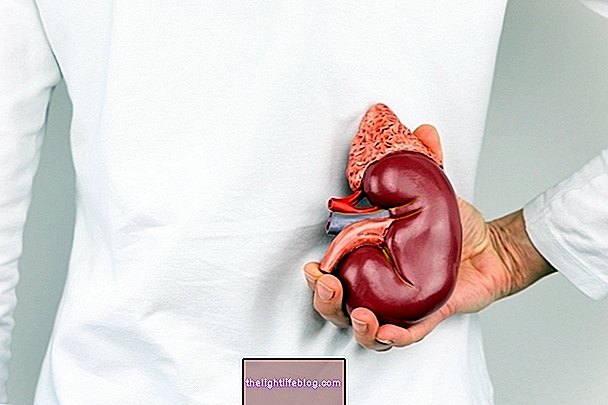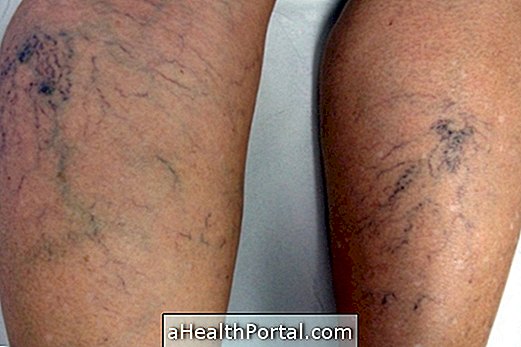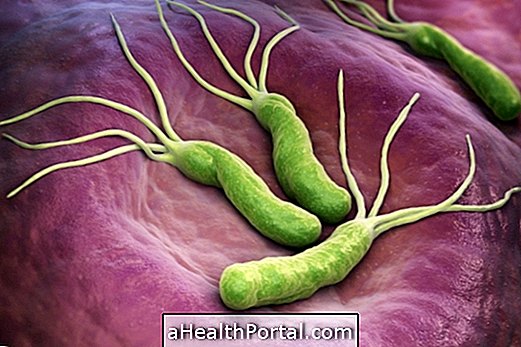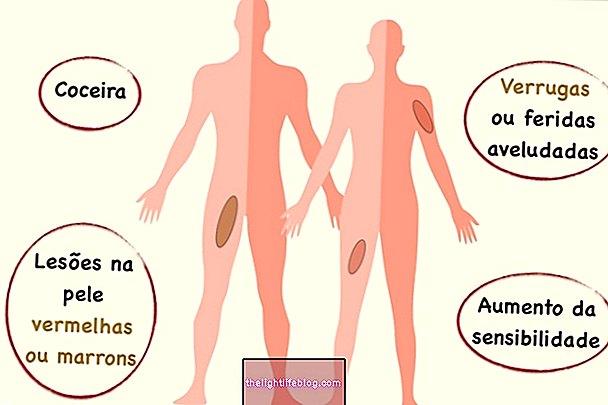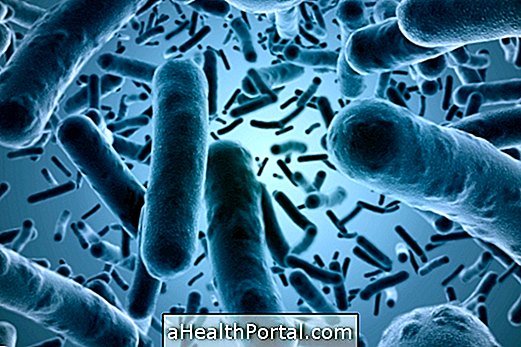Hemolytic Uremic Syndrome, or HUS, is a syndrome characterized by three main symptoms: hemolytic anemia, acute renal failure and thrombocytopenia, which corresponds to a decrease in the amount of platelets in the blood.
This syndrome happens more easily in children due to the consumption of food contaminated by bacteria such as Escherichia coli, but it can also happen in adults both due to infection and as a consequence of other situations, such as hypertension and scleroderma, for example.

Main causes
The main cause of HUS, especially in children, is infection by Escherichia coli, Salmonella sp., or Shigella sp., which are bacteria capable of releasing toxins into the bloodstream and lead to the formation of small thrombi in the vessels, resulting in the destruction of red blood cells and kidney damage. This type of infection usually happens through the consumption of food contaminated by these microorganisms, therefore, it is important to pay attention to personal hygiene and food. Understand what food hygiene is like.
Despite being more common in children, Hemolytic Uremic Syndrome can also occur in adults, which can be caused both by eating food contaminated by bacteria, as well as being a consequence of other situations, such as postpartum kidney failure, scleroderma, virus infection. HIV and antiphospholipid syndrome, for example.
Symptoms of Hemolytic Uremic Syndrome
The initial symptoms of HUS are similar to gastroenteritis, with fever, chills, diarrhea, excessive tiredness, vomiting and weakness. During the course of the disease, other symptoms may appear, such as:
- Acute renal failure;
- Little urine;
- Jaundice;
- Presence of blood in urine and faeces;
- Pallor;
- Appearance of purple spots on the skin;
- Jaundice.
Although uncommon, there may still be the appearance of neurological symptoms, such as seizures, irritability, unconsciousness and coma, for example. In addition, it is important to note that not all cases of HUS are preceded by diarrhea, and it is important that in the presence of any symptom suggestive of the syndrome, the person goes to the doctor to make the diagnosis and start treatment, preventing complications such as heart failure. chronic renal failure.

Diagnosis of HUS
The diagnosis of HUS is made through the evaluation of symptoms and the results of laboratory tests requested by the doctor, which aims to identify the three main characteristics of the disease, which are hemolytic anemia, decreased platelet count and changes in the functioning of the kidneys.
Thus, the doctor usually requests the performance of the blood count, in which the increase in the number of leukocytes is verified, the decrease in the amount of platelets, red blood cells and hemoglobin, as well as the presence of schizocytes, which are fragments of red blood cells indicating that these cells were ruptured due to some situation, which is usually the presence of thrombi. Learn how to interpret the blood count.
Tests that evaluate kidney function, such as the measurement of urea and creatinine in the blood, are also requested, which are increased in this situation. In addition, there is an increase in the concentration of indirect bilirubin in the blood and LDH, which is usually indicative of microangiopathic hemolysis, that is, that red blood cells are being destroyed due to the presence of small thrombi in the vessels.
In addition to these tests, the doctor can also request co-culture, which aims to identify the bacteria responsible for the infection, if that is the case, and thus define what is the best treatment to treat HUS.
How the treatment is done
The treatment for Hemolytic Uremic Syndrome is done to alleviate the symptoms and promote the elimination of the bacteria, in case the syndrome happens due to the infection. Thus, it is important to drink plenty of fluids to prevent dehydration, in addition to decreasing the consumption of proteins to prevent more serious damage to the kidneys.
In some cases, the doctor may recommend the use of antibiotics to fight infection or blood transfusion, which is most often indicated for children who have had bloody diarrhea as a symptom. In more severe cases, that is, when the kidney injury is already advanced and the person has symptoms of chronic kidney disease, dialysis and even kidney transplantation may be necessary, in which the affected kidney is replaced by another healthy. See how the kidney transplant is done and what the post-operative is like.
To avoid SHU it is important to avoid consuming raw or undercooked meats, as they may be contaminated, in addition to avoid consuming foods derived from milk that have not been pasteurized, as well as washing your hands well before preparing food and after using the bathroom.
Was this information helpful?
Yes No
Your opinion is important! Write here how we can improve our text:
Any questions? Click here to be answered.
Email in which you want to receive a reply:
Check the confirmation email we sent you.
Your name:
Reason for visit:
--- Choose your reason --- DiseaseLive betterHelp another personGain knowledge
Are you a health professional?
NoMedicalPharmaceuticalsNurseNutritionistBiomedicalPhysiotherapistBeauticianOther
Bibliography
- PESSEGUEIRO, Pedro; PIRES, Carlos. Uremic haemolytic syndrome / Thrombotic thrombocytopenic purpura. Magazine of the Portuguese Society of Internal Medicine. Vol.12; 102-116, 2005
- OLIVEIRA, Giuliana Rosendo et al. Atypical hemolytic-uremic syndrome. PARANAENSE JOURNAL OF PEDIATRICS. Vol.18. 12-15, 2017
- CAIRES, Tamira A .. Pathophysiology and diagnosis of Hemolytic Uremic Syndrome. Specialization Thesis, 2012. São José do Rio Preto Academy of Science and Technology.


